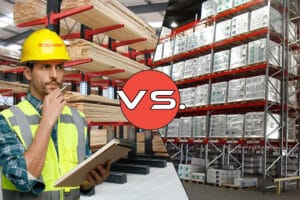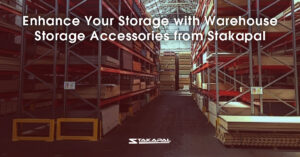Cantilever racking or pallet racking which is the best for your space?
At Stakapal we understand that efficient storage solutions are essential for the smooth operation of your business. We are the only UK manufacturer of both cantilever racking and pallet racking; the two most commonly used racking systems for storing goods in warehouses and yards. While both can increase selectivity, reduce stock damage and improve stock rotation, it is important to choose the right racking system for your storage needs. Our team of experts have compiled a helpful guide to help you choose.
Cantilever Racking Systems
Cantilever racking systems are typically used to store long and bulky items such as timber, copper pipes, steel tubes, or furniture. Cantilever racking utilises arms that extend outward from vertical columns, this design provides unobstructed storage space, making it easy to load and unload goods with varying types of handling equipment.
Conventional Cantilever Racking
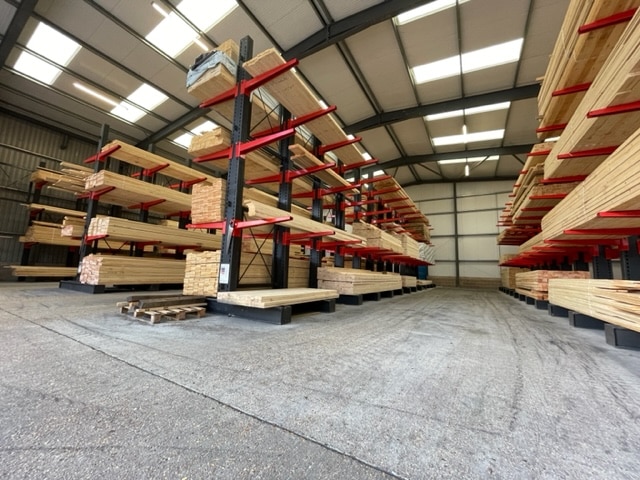
Conventional Cantilever Racking is the most popular variation of cantilever configuration that Stakapal manufactures and installs. Available single-sided or double-sided it can be used to store a multitude of long products from softwood and hardwoods, sheet metal and panel products.
Guided Aisle Cantilever Racking
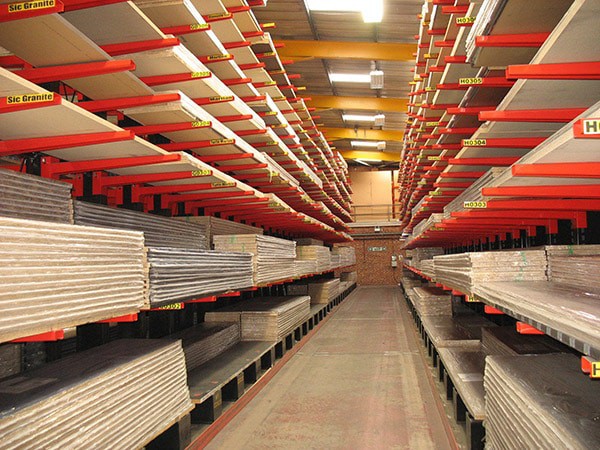
Guided Aisle Cantilever Racking consists of the same basic components as our conventional and free-path systems but with runs positioned closer together maximise the storage capabilities. Long load products can be stored at a far greater height to ensure cubic space is utilised to the fullest. Heavy duty products are accessed using specialist handling equipment which are guided by guide-rail systems to avoid damage to the rack structure.
Free Path Cantilever Racking
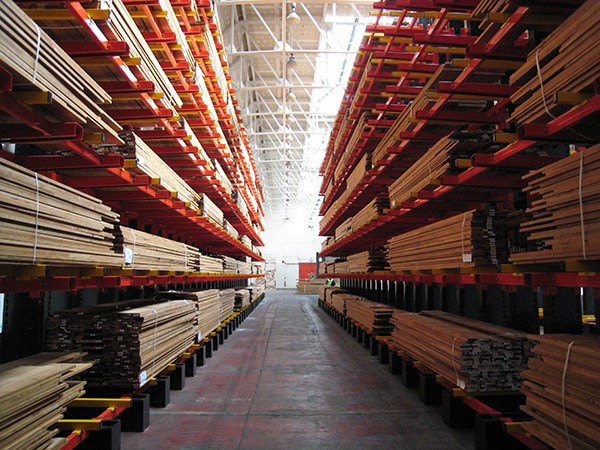
Free-Path Cantilever Racking consists of rows of racking adjacent to each other separated by an aisle that enables handling equipment to travel the length of the aisle without any guidance system. A key factor when operating a free-path system is to ensure that there is adequate clearance between the truck and the racks to allow safe and effective loading and unloading of the structure.
Key Features of Cantilever Racking Systems:
- Internal cantilever has a powder coat finish
- External cantilever has a fully galvanised finish.
- 100% accessibility to individual packs.
- Provides unobstructed access to stored items.
- Ideal for sectors dealing with items of varying lengths and sizes.
- Easily installed or re-positioned.
- A variety of handling equipment can be used.
- Single-sided or double-sided options.
- Improves space utilisation.
Pallet Racking Systems
Pallet racking systems are versatile storage systems designed to store palletised goods in a vertical arrangement. It consists of upright frames, horizontal beams, and varying ancillary items dependent upon storage requirements.
This system allows for easy access to individual pallets, making it suitable for high-density storage environments. Pallet racking from Stakapal is designed to be flexible and meet precise or bespoke requirements without sacrificing cost-effectiveness.
Available in various configurations, each offers specific benefits depending on the space requirement:
Conventional Pallet Racking
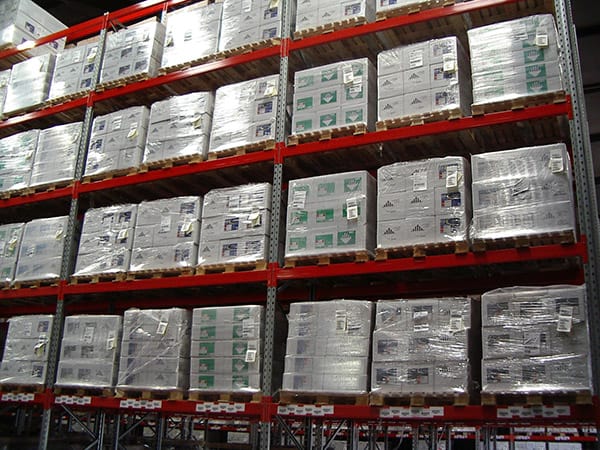
Conventional Pallet Racking is the most widely used system for palletised loads as it offers the flexibility to be easily adapted to meet your exact requirements. Available single-sided or double-sided configurations with aisles widths spaced to suit the forklift trucks of your choice. Stakapal designs and manufactures conventional pallet racking systems that are easily adjustable with the ability to accommodate changing stock profiles whilst ensuring direct access to individual pallets.
Narrow Aisle Pallet Racking
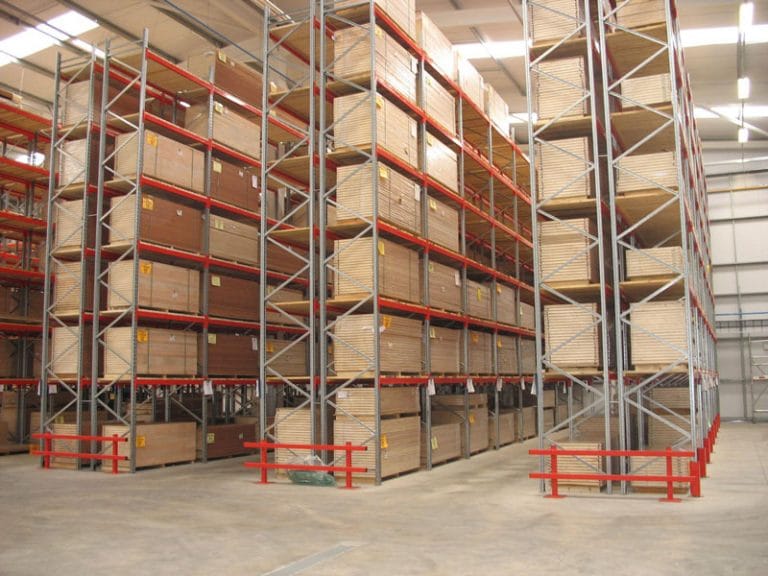
Narrow Aisle Racking consists of runs of racking positioned closer together than other types of pallet racking, eliminating wasted aisle space that can otherwise be utilised for additional pallet storage. Specialist forklift trucks are required to navigate this type of racking which is guided by low or high-profile floor mounted rails or electrical wire guidance in the floor.
Drive-in Pallet Racking
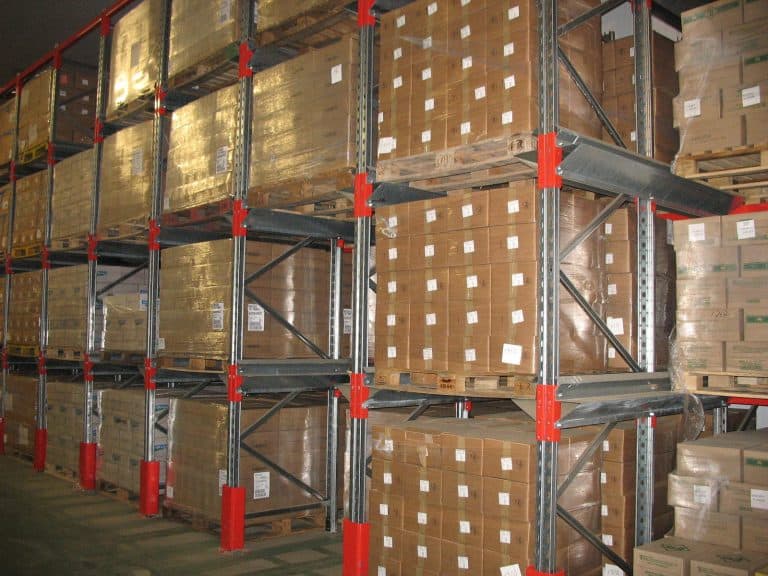
Drive-In Pallet Racking is a system that follows the principle of ‘first pallet in, last pallet out’, it is frequently used in facilities with a low number of product lines or seasonal goods, where high-density storage is required. Pallets are stored within a block system with two blocks typically serviced by one operating aisle and the beams for pallet location are replaced by stub arms which act as a support member to a pallet rail which runs from front to back of the application.
Key Features of Pallet Racking Systems:
- Ideal for low stock rotation or seasonal and fragile goods.
- 100% selectivity (access to every pallet).
- Maximises space utilisation.
- Enhances storage density and efficiency.
- High operating speed for increased stock throughput.
- Compatible with various forklift trucks.
- Available in single-sided or double-sided options.
- Fully adjustable within design constraints.
Similarities and Differences
Whilst both systems offer very specific features and benefits it all comes down to the differences. Which will vary based on your business, what you are looking to store, the access you require and the configuration and application of the racking.
- Goods Stored: Pallet racking, it’s in the name – is best suited for palletised goods, while Cantilever Racking is designed for long and bulky items.
- Access: Pallet racking allows for easy access to individual pallets, whereas cantilever racking provides unobstructed access to long (sometimes individual) products.
- Configuration: Pallet racking consists of upright frames and horizontal beams, while cantilever racking utilises arms extending from vertical columns.
- Application: Pallet racking is ideal for high-density storage of the same or varying products, while cantilever racking is suited for operations dealing with a variety of different items of varying lengths, shapes and sizes.
Choosing the Right Racking Solution
When deciding between a pallet racking system and a cantilever racking system, it is essential to consider the types of goods being stored, available space, access requirements as well as handling equipment. For businesses dealing with palletised goods, intending to maximise vertical space, pallet racking is the ideal choice. However, if you require storage of long and bulky items you will benefit from the unobstructed access and flexibility provided by cantilever racking.
In conclusion, pallet racking, and cantilever racking systems are both valuable storage solutions designed to meet different storage requirements. Understanding their features and differences will help you make informed decisions when selecting the right solution for your storage requirements.
Contact us today and our in-house project and design teams will work with you to create you bespoke racking system that will optimise and enhance your storage space. Offering a concept-to-completion service our customers are involved in every step of the journey to ensure that our racking is the right solution for you.

Stakapal are full members of SEMA (Storage Equipment Manufacturers Association), with our installation and inspection teams fully SARI (SEMA Approved Rack Inspector), and SEIRS (Storage Equipment Installers Registration Scheme) registered.

